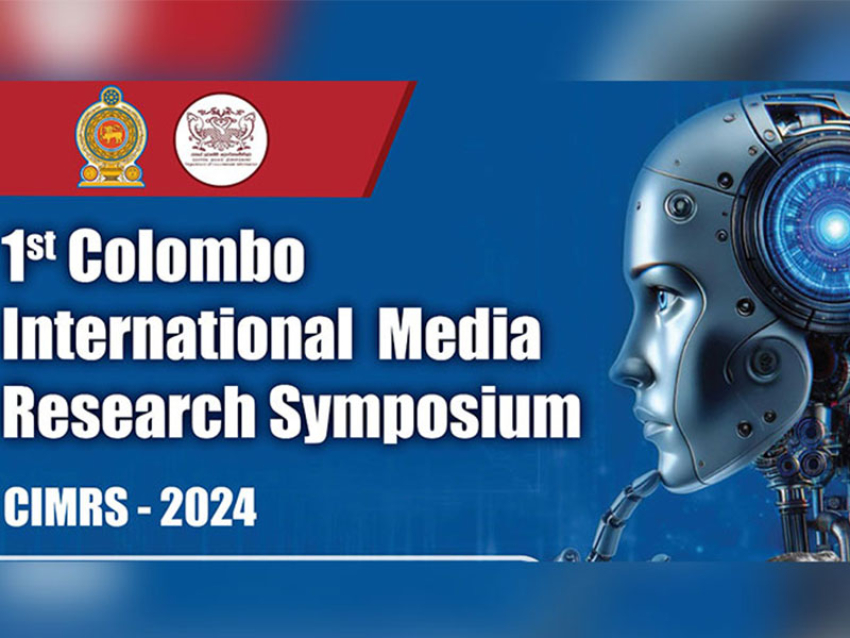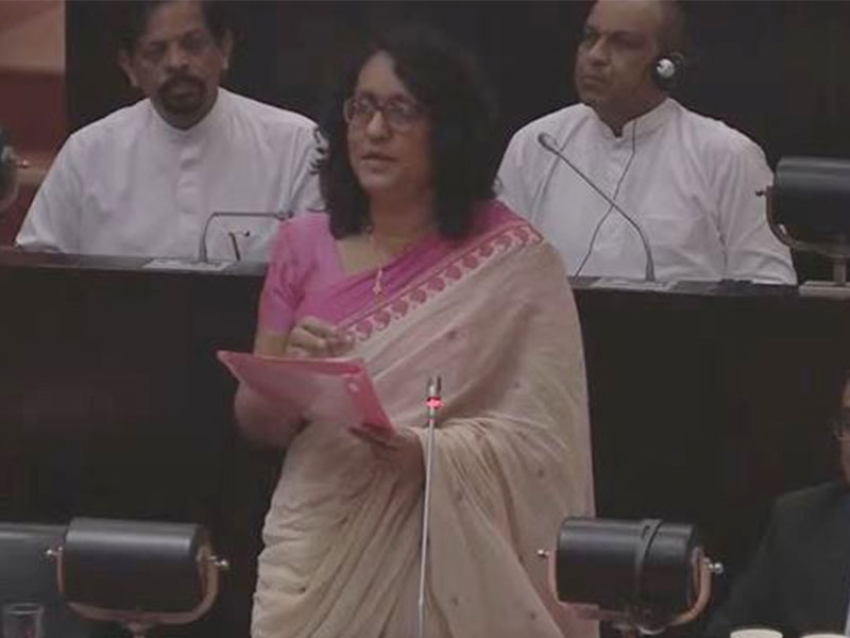Let us examine the meaning of the word vinnana. It consists of vi + nana. Vi -refers to divided and nana refers to knowledge. Thus it means divided knowing. Now what is this dual knowledge… “I” see “That”. Thus an “I” is created together with “That”. Thus vinnana is discriminatory, and it causes the arising of ajjatta (internal - “I”) and bahidda (external - object).
Let us look at another aspect of vinnana. Now how does Buddha describe vinnana. There are six aspects of vinnana - cakku, sota etc pertaining to the salayatanas (six sense bases). Thus you get cakku vinnana, sota vinnana etc. That is eye consciousness, ear consciousness etc. Buddha also says that these consciousnesses are specific to the sense organ with which they arise. For example taste is brought about by the tongue only. Seeing occurs through the eyes only etc.
What did the Buddha say about the arising of vinnana? “Cakkunca rupeca uppajjati cakku vinnana”. Note that I have emphasised the letters ca. ‘Ca’ in Pali refers to - ‘with'. So then it means - The eye together with the rupa (object) causes the arising of ‘eye consciousness'.
So when we summarize all this what we find is:
1. Vinnana causes the arising of subject and object.
2. Vinnana needs a sense organ for it to arise.
3. Vinnana is specific to the particular sense organ.
4. It arises when Nama-Rupa is present
So then if a sense organ is not functioning, then that specific vinnana will not arise. Thus to a deaf person there will be no sound consciousness. Now to a dead person, no consciousness of any type will arise. If ‘citta hewath vinnana’ - i.e if vinnana and citta are the same, then with death there will be no coming to be of another existence. When you are in deep sleep, without any dreaming, when there is no consciousness arising (as they say ‘dead to the world’) because all the sense organs are temporarily shut down; does this mean you are dead? Although your consciousness is not active, the citta is still there. The vitality of the body is maintained by the citta. When the citta leaves the body, then there occurs death.
The difference between the Citta and Vinnana can be experienced only when one gets into a deep level of Samadhi - the fourth Jhana and higher. It is here that the Citta separates temporarily from both Nama and Rupa. Vinnana is only a condition of the Citta.
Consciousness is not an individual, not a being, not a self, not another. As soon as they arise, they pass away; they don’t really exist in themselves. Consciousness causes a mental impression to arise which then draws and pulls at the mind which falls for it.
Consciousness is a sankhata dhamma - a thing arisen dependently. They deceive us constantly, we find no certainty anywhere. The world is nothing but sensations brought about by our six senses and their corresponding vinnanas. The sensations themselves are the world. Not fooled by these sensations, we aren't fooled by the world. We will see the emptiness of the world. If we hold fast to these sensations without thinking that they are sankhata dhammas, and as such, that they are transient, they have no self or being, they are neither ‘us’ nor ‘them’, then we are bound to suffer.
“Mogaraja look at the world as empty, with mindfulness at all times, Uprooting the lingering view of self, get well beyond the range of death.
Him who thus looks upon the world, The king of death (Mara) gets no chance to see”
- Sutta Nipata verse #1119.
If we leave vinnana on its own, without getting involved with it to the extent that we get drowned in it, then it will not bother us; like a thorn which is left on its own without trampling.
Let us now look at the Arahant's vinnana.
In the Samyutta Nikaya. Khandhasamyutta, Penapindupama Sutta, Buddha describe vinnana thus:
“Suppose, bhikkhus, that a magician or a magician's apprentice would display a magical illusion at a crossroads. A man with good sight would inspect it, ponder it, and carefully investigate it, and it would appear to him to be void, hollow, insubstantial. For what substance could there be in a magical illusion? So too, bhikkhus, whatever kind of consciousness there is, whether past, future, or present, internal or external, gross or subtle, inferior or superior, far or near: a bhikkhu inspects it, ponders it, and carefully investigates it, and it would appear to him to be void, hollow, insubstantial. For what substance could there be in consciousness”?
In the Kevaddha Sutta - Digha Nikaya #11 - “Where do earth, water, fire and air have no footing? Where are long and short, coarse and fine, fair and foul, where “name-and-form” totally destroyed”?
And the answer is:
Where consciousness is signless (Vinnanam anidassanam), boundless, luminous all around, that's where earth, water, fire and air find no footing.
There both long and short, coarse and fine, fair and foul, there “name-and-form” are wholly destroyed.
With the cessation of consciousness this is all destroyed.
Now one may come to the conclusion that Nibbana is achievable only through the total extinction of one's consciousness (vedana). Does this mean that the living Arahant who is in Sa-upadhisesa Nibbana (Nibbana with residue - his present nama-rupa brought about by past kamma), is totally devoid of Consciousness (vinnana)?
The key word here is ‘ani-dassana’ - signless, not- pointing to anything. In other words, this vinnana DOES NOT manifest anything. This word also appears in the Kakacupama sutta in the Majjima Nikaya (#21) - “Bhikkhus, suppose a man came with crimson, turmeric, indigo, or carmine and said: ‘I shall draw pictures and make pictures appear on empty space.’ What do you think, bhikkhus? Could that man draw pictures and make pictures appear on empty space?” - “No, venerable sir. Why is that? Because empty space is formless and invisible (Ayanhi, bhante, akaso arupi anidassano); he cannot possibly draw pictures there or make pictures appear there”.
Here too this word anidassana refers to a lack of media or substrate where anything can get a hold on to. An Arahant's vinnana is said to be anidassana. His Citta is pure and totally empty, empty of any media or substrata (‘I’ or ‘person’, nama-rupa) for that vinnana (consciousness) to hold on to. This arisen vinnana would appear to him to be void, hollow, insubstantial, a magical illusion; unlike the dog who sees his image in a pool of clear water and thinks that it is he or another dog, and barks at it, due to his unwise attention (ayaniso manasikara).
The Arahant's vinnana is clearly shown by the Buddha in the Malunkyaputta Sutta (Samyutta Nikaya 35.95). “Then, Malunkyaputta, with regard to phenomena to be seen, heard, sensed, or cognized: In reference to the seen, there will be only the seen. In reference to the heard, only the heard…... That is how you should train yourself. When for you there will be only the seen in reference to the seen, only the heard in reference to the heard, …… then, Malunkyaputta, there is no you in connection with that. When there is no you in connection with that, there is no you there. When there is no you there, you are neither here nor yonder nor in between. This, just this, is the end of suffering. The same appears in the Bahiya Sutta too.
“Let be that which is not good, or that which is good, - let it be according to its own nature. Let your liking and your disliking be - the same way that you don’t interfere with the cobra”.
WE ARE TORMENTED BECAUSE OF SO MUCH THINKING, YET WE DON’T ASK OURSELVES WHETHER IT’S ALL WORTHWHILE.




















